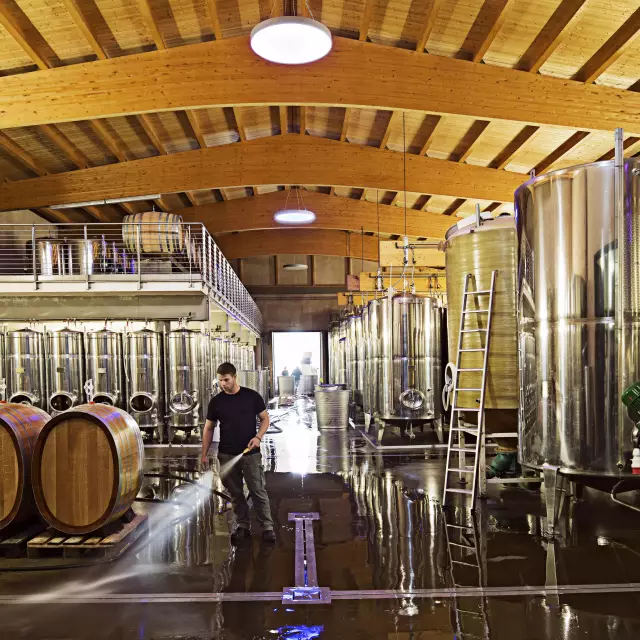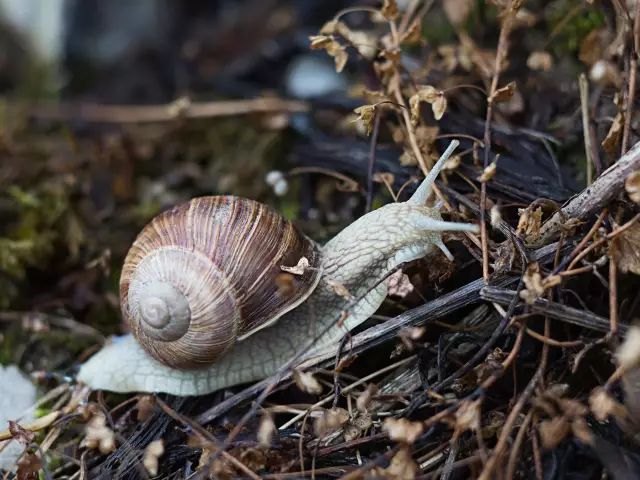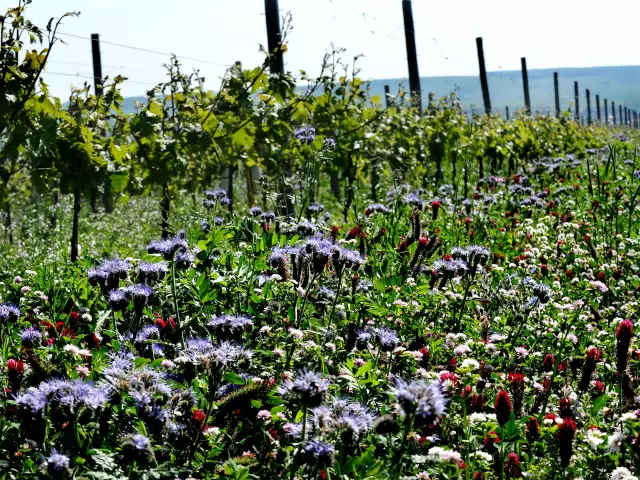Winemaking in the cellar

After harvesting, the grapes are crushed and the so-called must is produced.
Facts
-
9g per liter
is the maximum residual sugar for a wine in the "dry" category
-
5,5-15 %
alcohol content a wine is allowed to have
-
5
different taste sensations are perceived by the tongue: Umami, bitter, sour, sweet and salty
Winemaking in the cellar
It is a long journey from the vines in the vineyard to sipping a beautiful wine. A winegrower therefore has three professions: as a winegrower, cellar master and more recently, also as a merchant.
But that's not all. To produce a good wine, one also requires valuable experience passed down through generations, a feeling for nature, zeal, diligence and a precise knowledge of the skills needed by a cellar master.
Masterwork in the cellar
When nature has done its job and the grapes are harvested, it is the task of the cellar master to bring the fine attributes of the grapes, generated in the vineyard, into the wine without loss of quality and to then refine them through the winemaking process. But lets go step be step...
After the harvest, the grapes are first pressed gently. The berries are crushed, creating the so-called ‘mash’. Winemakers seeking quality may de-stem some varieties before pressing (separate the grapes from the stems). For white or rosé wines, the mash is pressed shortly thereafter. These wines are then called light-pressed. Alternatively, for red wine, the mash is fermented or warmed before it is pressed. By pressing the mash, the winemaker obtains the must that still contains sediment.
This must is stored in barrels or tanks and begins to ferment there. Fermentation is started by yeasts, which are a natural component of the grapes and juice. Alcohol and carbonic acid are formed from the conversion of the grapes’ fruit sugar. The naturally available yeasts are often not enough to get the fermentation going, therefore, the winegrowers use so-called pure culture yeasts that were specially developed for winemaking.
Patience is rewarded
Potentially, wine yeast could convert all of the sugar into alcohol, but from 12-15% content, the yeast is "exhausted" and the fermentation is finished. Nowadays fermentation in the cellar is mainly controlled by heating or cooling the tanks or barrels. This makes it possible, among other things, not to let the wine ferment through to the end, but to leave some fructose as residual sweetness.
A residue of fructose can also remain with fully-fermented wines, however the proportion with dry wines is low - maximum 9 grams per liter. In the case of noble sweet wines in the higher Prädikat levels (Auslese, Beerenauslese, Trockenbeerenauslese and ice wine), the residual sugar is very high and can be up to 200 g / l.
After fermentation is complete, the yeast settles on the bottom of the fermentation tank and the clear wine is carefully removed from this sediment. This process is called racking, after which the wine is most often sulfurized to protect it from oxidation. After a certain time, the very last yeast residues and microscopic particles can be filtered out in one or two steps. The wine is now clear and ready to be bottled. Depending on the quality, it can age there for years or even decades as alcohol, acidity and residual sweetness conserve the wine in a natural way. This last stage of creating a top-quality wine requires patience. But as the saying goes: anticipation is the greatest joy!
Click here for short video on bottling.
In the cellar, opinions differ
Nowadays, the winemaker can choose the right type of vinification depending on the grape variety and wine style. In addition to the traditional large wooden barrel, there are also stainless steel tanks which, after their evolution more than 30 years ago, have increasingly found their way into German cellars, as well as the more recent trend for the barrique barrel.
In the end, it is not the container that decides the quality of a wine, but the ability of the cellar master to handle and understand the numerous processes involved in winemaking and bring these all together to a trusted, high quality product. Such sensitivity is rewarded with wonderfully complex and structured wines.
How do barriques, tonneaus and piece barrels differ from each other?
What they all have in common is their material wood. Barriques hold 225l, tonneaus 500l and piece barrels 1,200l. Half-piece barrels hold 600l accordingly and double piece barrels 2.400l.




